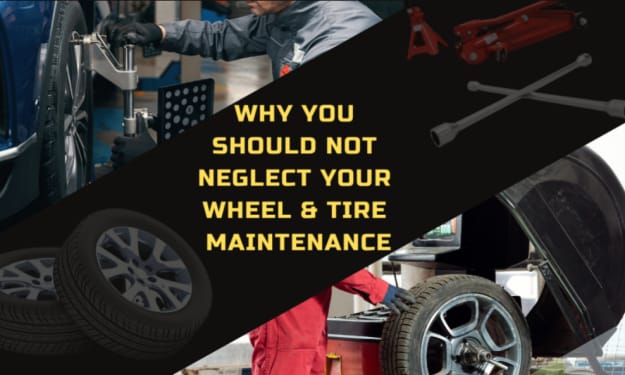
Would you be willing to try all 15 of these tactics if I told you that they may help you extend the life of your car? You may be avoiding a lot larger expenditure in a few months by making a minor outlay now, even if it will not go well for you right now. Maintaining your car at home is an essential understanding that all drivers need to know and research about to learn.
The best advise is to never dismiss a symptom: a broken component will never heal itself. It's important to remember that unusual noises can indicate a problem with the engine or other mechanical components. When it comes to brakes, if metal scrapes against metal, the discs are toast; with the timing belt, the engine's life is on the line. Pay attention to the colour of the tailpipe smoke as well. If your car is maintained and in new condition you will not think to sell your car sooner by getting instant online car valuation.
1. Keep the paint safe.
Sun beams, insect remains, and bird droppings are all present. On a daily basis, all of this wreaks havoc on the painting. Apply a layer of wax for added protection; this should be done at least twice a year because wax stops moisture from penetrating.
When trying to sell your car on the used market, keep in mind that a car with poor paint detracts from its value.
2. Purchase a front protector.
Do you usually go along highway sections? If this is the case, check the front of the car for damage to the paint on the hood or wing caused by the small Chinese lifted by other vehicles. You can use a special protective paint coating to shield the region from these mild impacts.
3. Examine the car's 'guts'
We don't mean the engine when we say "vehicle guts," but rather the deeper components and space. A new car's anti-corrosion protection is usually adequate; nevertheless, if the vehicle is older than a few years, it is recommended that the inside of the engine be waxed or protected with protective greases.
The catalytic converter maintenance is also an integral task apart from the engine care that improves the efficiency of your car.
To see the cavities of the car, some specialists utilise a special endoscope. The look of the holes is frequently unsatisfactory, necessitating a treatment with grease or wax.
4. Make sure the rubber gaskets are in good shape.
The polymers in your automobile age as a result of environmental influences and will not accept the use of the incorrect detergent. If you use products with strong abrasive qualities, be cautious because they can damage rubber or plastic parts.
Many external causes might cause rubber to break. If this occurs, your car will not only appear worn out, but it will also be subjected to more weather damage (water can even enter the cabin in heavy rain).
To avoid this, periodically apply rubber renovators and, in reality, lift the dashboard so that it does not block the sun.
5. Wash it on a regular basis
The accumulation of dirt is a source of corrosion, thus it's critical to get rid of any entrenched stains as soon as possible. For car washes, a pre-wash with a high-pressure gun can help remove dirt from hard-to-reach spots (corners, fins ...). Remove any leaves that have gathered in the air intakes as well.
6. keep an eye on the oil level
When the oil level indicator light turns on, you can't wait a minute to fill because the oil level is well below the minimal point (you better not check how far your car can go without oil ). Within the 15 techniques to extend the life of your car, this is one of the most crucial advice.
Everything you need to know about oil changes
Because a lack of lubricant might result in serious engine damage, it is recommended that you check the level at least once a month.
7. Get a new timing belt.
If the warranty has expired, be cautious of the manufacturer's recommended belt change intervals: this is one of the most expensive breakdowns to repair.
You will almost certainly not be compensated if it rips early. In any case, treat the deadlines as if they were sacrosanct, and try not to rush them or get too far ahead of yourself.
8. Keep an eye on your Tyre pressure.
It is difficult to detect a faulty Tyre when driving. Even the most experienced rider may discover that the rubber has lost its traction when it is too late. On highway parts, if the pressure is low, the Tyre will become extremely heated. Deformations in the sidewalls or treads are exceedingly harmful!
The recommendation is to inspect the Tyres on a regular basis and always before departing on a trip; in this case, it's also a good idea to adjust it to the load in the trunk. Read this for Tyre maintenance and how to select the tyres.
9. Temperature control
The air conditioning system is a watertight circuit in theory. However, 10 percent of the refrigerant evaporates each year in reality. After a few years, some of the circuit's components are replaced (depending on use). Take this into consideration before changing the gas in your air conditioner.
10. Don't be stingy with spare parts.
Filters that are dirty or porous belts that are porous might increase fuel consumption or cause engine harm. The worst thing you can do is ignore your brakes or chassis, which will make it difficult for you to pass the ITV.
11. Avoid brief sections of travel.
Cold running causes parts to wear faster and keeps the oil from heating up. In addition, the lubricant reacts with gasoline and steam.
12. Avoid slamming into curbs.
Experts refer to the'memory of the Tyres,' which states that if the rubber is neglected or the proper pressure is not maintained, there will be no noticeable damage to the wheel's structure. The Tyres will eventually become faulty.
The greatest suggestion at this moment is to be extremely cautious when parking... unless you have a car that parks itself:
13. Allow the engine to warm up before proceeding.
When an engine is pushed too hard in the first few kilometres, it wears down quickly. Allowing the water to reach a temperature of 90 degrees is preferable; for oil, the temperature should be around 75 degrees. The most time it takes for motor oil to warm up is the most. The disadvantage is that many cars no longer have a temperature gauge for water or oil. There are many efficient driving styles to adopt for saving fuel as well as keeping your car highly maintained.
14. Make an effort to shift gears smoothly.
There is ongoing wear and tear when the left foot is trapped on the clutch pedal. When the gears are engaged incorrectly and the gear is'scratched,' something similar happens. If many of these habits are combined, the clutch is unlikely to last even 15,000 kilometres.
15. Forget about abrasive manoeuvres.
When the traffic light turns green, the automobile accelerates to the next one, slamming on the brakes. Anyone who becomes accustomed to driving in this manner quickly wears out their brakes and drivetrain.
Consider next time that needless overexertion causes wearing parts to fail. And that efficient driving will help you save money on gas.
About the Creator
Jack Ward
Blogger






Comments
There are no comments for this story
Be the first to respond and start the conversation.